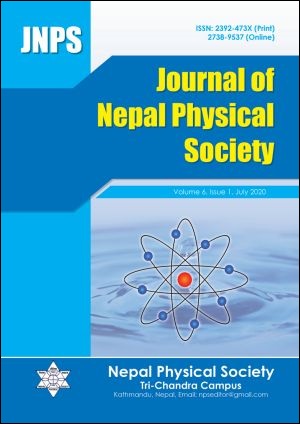Path Integral Simulations of Harmonic Oscillator
DOI:
https://doi.org/10.3126/jnphyssoc.v6i1.30516Keywords:
FORTRAN, Path integral, Monte Carlo, Harmonic Oscillator, InteractionAbstract
To study the interaction of atoms present in the two rings polymer molecule system, we have performed path integral, Monte Carlo simulations method using FORTRAN code. In literature, we found that the interaction of atoms present in two rings polymer molecule was done by path integral, Monte Carlo simulations method. Also, we found that less the number of atoms present in the rings polymer molecule i.e. P = 2, 4, 8, 16, more will be the probability of getting classical result. But, if the numbers of atoms are increased in the rings, we can reach near exact quantum mechanical result. When the value of P is ∞ the average interaction energy value of atoms present in two rings was found to be 0.5, which was exact zero point energy value of harmonic oscillator. As given in literature, we have studied the interaction of atoms present in two rings polymer system using path integral, Monte Carlo simulations method, the result we produced was as same as in literature, where the value of P were 2, 4, 8, 16 and ∞. We have done additional work by taking the values of P = 32, 64, 128, 256 and calculated the variation of average interaction energy with temperature, and found that the value of average interaction energy <E> = 0.5 at low temperature T ≈ 0K. This value is called zero point energy value of quantum harmonic oscillator. Here, the value of P = 256 and P = ∞ can resemble with each other. For this, we took P = 256 and observed the interaction, and found that the average interaction energy value of atoms present in rings was 0.5 at T ≈ 0K. Therefore, by this additional work we can say more clearly that increasing the number of atoms in two rings polymer molecule will result to the high possibility of getting exact value of average interaction energy in the system.
Downloads
Downloads
Published
How to Cite
Issue
Section
License
All right reserved. No part of this Journal may be reproduced in any form or by any electronic or mechanical means, including information storage and retrieval system, without permission in writing from the publisher, except by a reviewer who may quote brief passage in a review. The views and interpretation in this journal are those of author(s) and they are not attributable to the NPS.




